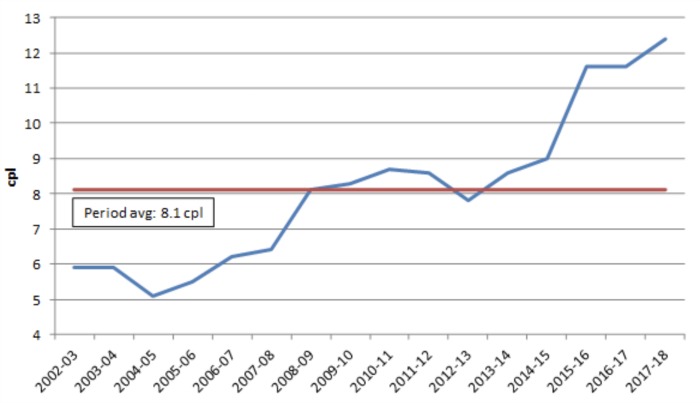Retirees could be hit hard as petrol prices reach four-year high: Study

Reports that petrol prices have reached their highest point in four years will be unwelcome news to many Aussies living in the country’s largest cities, including retirees and pensioners who live off a fixed income.
A new report released by the ACCC (Australian Competition and Consumer Commission) revealed that the cost of fuel has risen by 7 per cent in just three months, reaching a real term cost of around $1.45 per litre in the likes of Sydney, Melbourne, Brisbane, Adelaide and Perth.
The ACCC’s petrol monitoring report shows a significant hike in petrol prices in the 2017-18 financial year, despite costs having fallen steadily throughout the previous 12 months between 2016 and 2017.
“The major factors driving higher prices were an increase in international crude oil and refined petrol prices, and a lower AUD-USD exchange rate,” ACCC Chair Rod Sims said.
“The OPEC cartel in particular continues to have a damaging effect on Australian petrol prices. In late-2016 OPEC, and some other crude oil producing countries, agreed to cut production. This restricted supply into the market, which has clearly started to bite through steadily increasing petrol prices in the past financial year.
“A weaker Aussie dollar has also increased costs for wholesalers buying petrol for the Australian market, which flows through to consumers who pay for this at the pump.”
Read more: Price watchdog reveals tips for finding the cheapest petrol.

Many Starts at 60 readers are troubled by the news and said they’d like to be given an explanation for the rising prices so they understand precisely how they are set.
Reader Janice D’Ambra told us: “I don’t exactly ‘struggle’, but I do resent the fluctuating prices. I think we deserve a simple explanation of how the prices are determined, and justified. I should also like to understand how prices can be increased in a matter of hours.
“How often I pass a petrol station, see one price, and an hour later drive past again to see a price increase of as much as 30 cents per litre? It’s pure collusion… these places cannot claim their petrol is a fresh delivery. Too many, too close to one another, for all to have had deliveries!”
While reader Sue Leighton told us she doesn’t struggle to afford fuel, because she cannot afford a car. She said: “Oh, no this isn’t a problem for me because I can’t afford a car. If I could afford a car, I couldn’t afford to run it, then I couldn’t afford to insure it, then I couldn’t afford to maintain it.”
The report also revealed that Brisbane is still the most pricey major city when it comes to paying for petrol, with motorists in the city paying the highest prices of the five biggest cities for 18 of the past 24 months.
According to the report, the prices at the pump are also being affected by the gross margins Australian petrol retailers are obtaining for every litre sold, with these numbers hitting a record high in 2017-18.
“Current gross retail margins in the five largest cities are now over 50 per cent above the 16 year average since the ACCC began tracking this data,” Mr Sims added.
Advising motorists on how to save money on fuel, the ACCC recommended using free fuel price apps and websites to shop around to find the lowest prices locally, which they say in turn will pressure retailers into lowering costs to keep up with competition.
What do you think? Have petrol prices increased where you live?








 Proudly Australian owned and operated
Proudly Australian owned and operated